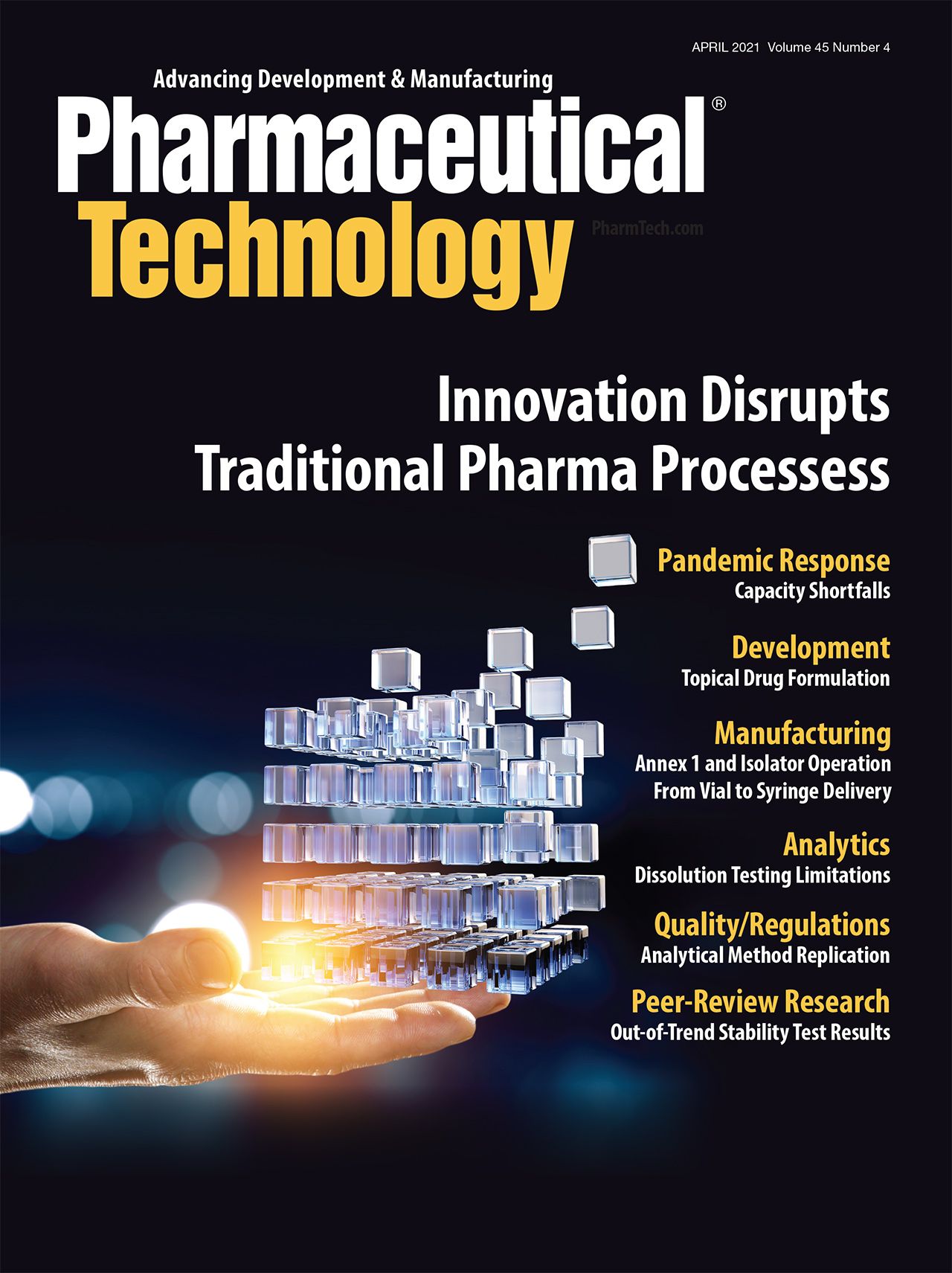Editor’s Note: This article was published in Pharmaceutical Technology Europe’s April 2021 print issue.
A Watchful Eye on Pharma: Promising Drugs and Changing Bio/Pharma Landscape
COVID-19 has placed bio/pharma in the spotlight of global media, but away from vaccines there are other prospective pipeline treatments that will be worth watching.
As vaccine programmes throughout the world are kicking into a higher gear and more of the population are receiving vaccinations, a watchful gaze over side effects, efficacy results, and bio/pharma companies in general has taken hold of the world’s media. AstraZeneca’s woes seem to be compounded, with Germany becoming the latest country to limit the use of the vaccine due to concerns over a rare blood-clotting disorder (1), despite regulatory authorities’ assurances that the benefits of the vaccine significantly outweigh any risks (2).
Yet, it is also important to remember that bio/pharma companies are not solely focused on COVID-19, even though a significant concerted effort has been made by the industry overall in this area over the past year. There is, in fact, a vast selection of drugs in development pipelines on the cusp of approval, some with the potential to become game-changers for certain disease areas that affect millions of people globally.
Exciting prospects ahead
According to Clarivate’s Drugs to Watch 2021 list, there are four new treatments in particular that have been deemed as likely to gain blockbuster status in the near future (3). All four in Clarivate’s list are predicted to deliver more than US $1 billion (€852 million) in sales within five years (3).
The four drugs highlighted by Clarivate are aducanumab from Biogen and Eisai, bimekizumab from UCB, relugolix from Takeda, and vericiguat from Bayer and Merck. These drugs are targeting Alzheimer’s disease, psoriasis, prostate cancer and female reproductive health issues (endometriosis and uterine fibroids), and chronic heart failure with reduced ejection fraction, respectively.
Several other prospective treatments in development were also highlighted within the report, which, despite not fitting within the inclusion criteria for Clarivate’s study, are considered to have ‘notable potential’ (3). These promising therapies included chimeric antigen receptor T-cell therapies idecabtagene vicleucel (Bristol Myers Squibb) and ciltacabtagane autoleucel (Janssen), anti-inflammatory bardoxolone methyl (Reata), nerve growth factor inhibitor tanezumab (Pfizer and Lilly), monoclonal antibodies tralokinumab (LEO Pharma) and nemolizumab (Galderma), and experimental pneumonia vaccine PF-06482077 (Pfizer).
“In the last five years we have seen an increase in approvals of innovative medicines at a rate more than double what it was a decade ago,” said Mike Ward, global head of Thought Leadership, Life Sciences and Healthcare, Clarivate, in a press release (4). “A number of drivers have aligned to achieve this improvement, including greater insight into the biological roots of diseases, oncology research benefitting from the routine introduction of biomarkers to better target therapies, the emergence of gene and cell therapies, and efforts by regulatory agencies to introduce processes to accelerate medicine assessment.”
The COVID-19 effect
Undoubtedly, COVID-19 has changed the bio/pharma landscape for the future. The general public have become more invested in details, such as clinical trials and supply chains, and have increased expectations for innovative solutions and therapeutic access, changes that have a likelihood of being permanent in the future (5).
Speed of development has been unprecedented during the COVID-19 pandemic, a reversion of which will be hard to accept for industry and patients. This change of development model, if it is to continue into the future, will require agreement and partnership with industry, regulators, and patients, as well as other stakeholders (3,5).
Key tools to aid with development timeline acceleration, which have found prominence during the pandemic, will be in the form of digital technologies. Whether it be increased digitalization of development and manufacturing, or the use of digital solutions to help with quality inspections and clinical trials, the industry’s pace in the direction of the digital transformation has quickened and will likely continue (5).
Finally, increased collaboration throughout the industry has proven to be invaluable during the COVID-19 pandemic. Cross-industry and cross-enterprise collaborations are anticipated to become the new normal, meaning that companies will need to adapt to this changing landscape (6).
References
1. BBC, “Covid: Germany Limits Use of AstraZeneca Covid Jab for Under-60s,” News Release, 31 March 2021.
2. PharmTech, “Regulators Confirm Benefits of AstraZeneca Vaccine Outweigh Risks,” PharmTech.com, 19 March 2021.
3. Clarivate, Drugs to Watch 2021, Report (March 2021).
4. Clarivate, “Clarivate Drugs to Watch Report Highlights Four Likely Blockbusters Among Drugs Launching in 2021,” Press Release, 9 March 2021.
5. G. Agrawal, H. Ahlawat, and M. Dewhurst, “Biopharma 2020: A Landmark Year and a Reset for the Future,” McKinsey & Company, 8 Jan. 2021.
6. F. Thomas, Pharm. Tech. Eur., 33 (3) 44–45, 48 (2021).
About the Author
Felicity Thomas is the European editor for Pharmaceutical Technology Group.
Article Details
Pharmaceutical Technology Europe
Vol. 33, No. 4
April 2021
Page: 6
Citation
When referring to this article, please cite it as F. Thomas, “A Watchful Eye on Pharma,” Pharmaceutical Technology Europe 33 (4) 2021.

Drug Solutions Podcast: A Closer Look at mRNA in Oncology and Vaccines
April 30th 2024In this episode fo the Drug Solutions Podcast, etherna’s vice-president of Technology and Innovation, Stefaan De Koker, discusses the merits and challenges of using mRNA as the foundation for therapeutics in oncology as well as for vaccines.
Drug Solutions Podcast: Gliding Through the Ins and Outs of the Pharma Supply Chain
November 14th 2023In this episode of the Drug Solutions podcast, Jill Murphy, former editor, speaks with Bourji Mourad, partnership director at ThermoSafe, about the supply chain in the pharmaceutical industry, specifically related to packaging, pharma air freight, and the pressure on suppliers with post-COVID-19 changes on delivery.
Pharmaceutical Tariffs Are Imminent: How Industry is Bracing for Impact
April 16th 2025On April 14, 2025, the Trump Administration launched a national security-driven investigation into pharmaceuticals, a move that will likely result in tariffs being placed on pharmaceutical drugs, ingredients, and other components that are imported from outside of the United States.